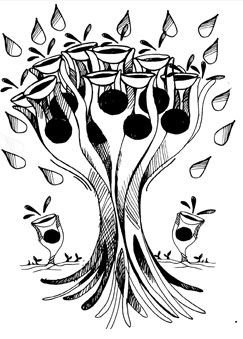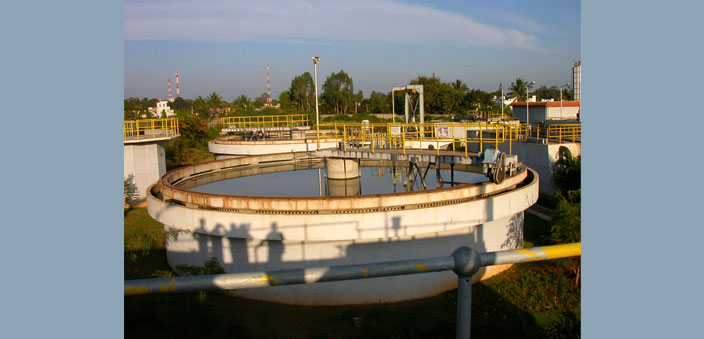The need for information which establishes the dire situation around water are long over. In India, we are especially vulnerable due to our large population which is still growing, and has many competing needs for water. We have also reached a stage where we have severely depleted groundwater in several regions in the country, river flows are reduced, and there are frequent fights between residents in some regions over water.
The Sustainable Development Goals adopted by the world under the United Nations framework has Goal Six as “Ensure availability and sustainable management of water and sanitation for all.”
Proper management of water, conservation and reusing water can ensure that there is nothing to worry, but all of this can only help if there is a sense of urgency and action upon all that we know. As a collective we need to show impatience with business as usual. We cannot have the best of knowledge being shared at conference, academic papers and pilot experiments, and the worst of practices in our municipal corporations and society at large. Our ability to bridge the gap between what we know and how much of it we use to productive advantage, is at test right now.
Treating the waste
The theme for this year’s Water Day is waste water. In India this is an issue of great concern because not only are we facing the challenge of providing water for a very large population and shrinking water supplies, but we are also polluting the available supplies with all kinds of untreated effluent. In the Western nations which industrialised early, this scale of pollution was seen once upon a time, and it is unimaginable now there to see water bodies being treated the way they are currently treated in India.
 On any river, waste from one city becomes the intake water for a city downstream. Treatment of waste water is becoming an absolute necessity. A succinct report by India Spends presented earlier this year and compiled from multiple sources, highlighted the situation and estimated that 62,000 million litres of waste water is generated in urban India every day. Of this, only 30% is treated, and the remaining 70% is released untreated into water bodies. This is completely unacceptable and needs to be addressed as a national priority.
On any river, waste from one city becomes the intake water for a city downstream. Treatment of waste water is becoming an absolute necessity. A succinct report by India Spends presented earlier this year and compiled from multiple sources, highlighted the situation and estimated that 62,000 million litres of waste water is generated in urban India every day. Of this, only 30% is treated, and the remaining 70% is released untreated into water bodies. This is completely unacceptable and needs to be addressed as a national priority.
Take the example of Mumbai which generates approximately 2,500 million litres of waste water every day. This is being generated in residential buildings, commercial buildings, restaurants, hotels, various industries and in government buildings.
The Municipal Corporation of Greater Mumbai (MCGM) seems to favour centralised means of treating this sewage. The idea being that all the untreated sewage should be first transported by a network of pipes to centralised water treatment plants, where this sewage would then be treated. This has enormous implications in terms of setting up of a sewerage system, treatment facilities, and a large amount of energy consumption in transportation. Even the quality of treatment and what is finally released into the seas is questionable.
We live in an age when there is enormous expertise available on treating waste water exactly where it is produced and to reuse a certain percentage of the same. Such an approach has so many benefits that one would be suspicious about why municipal corporations around the country should not be encouraging the same.
Large residential colonies and commercial complexes can carry out the necessary investments to carry out decentralised treatment. In several cases, space is not the problem. Just that we are still not seized with a sense of urgency that I stress on above. It should be the role of the municipal corporation to facilitate all of this. Numerous successful case studies exist – the proof of concept is well established.
Mumbai has a large number of slums and consequently community toilet blocks. These toilet blocks are used by thousands every day, and become bulk generators of sewage. In some cases, the sewage is discharged directly into a neighbouring river or creek. Using well developed techniques all this sewage can be treated on site. Even if the same is not used locally, the treated sewage would have a considerably reduced nutrient load, and will help in reducing the pressure on the centralised system and allow it to work more efficiently.
Reusing water and aiding the water cycle is one of the most effective and easily doable methods available to reduce the water stress being faced by the planet. This also has important forward and backward linkages.
Not only does it help reduce water stress, but it also helps avert the damage to ecologically important areas. Most water comes from impounding water in catchment areas of rivers. Almost all the water supplied to the Mumbai Metropolitan Region is supplied by creating reservoirs on rivers.
The flawed strategy
In the absence of good water management, the approach followed by the authorities is what is called supply side management. They calculate the total water requirement of a city and the rate at which the demand is growing, and provide the supply by creating new capacity by impounding rivers and tributaries with dams. In the process, forest land is submerged, natural flows of a river are disrupted with severe consequent damages. If demand side management is carried out along with water recycling, then the need for additional capacity would be much less.
The linkage between forests and our natural areas and water is a very important one to be brought out. The natural ecosystems and forests are like a precious water making factory provided free of cost by nature. Let us remember that we do not manufacture water in our treatment plants, we only process it. The water is manufactured in nature. When we damage these systems, we cause damage to the ability of future generations to be able to access water the same way as we do now.
Take the example of Bengaluru. Unlike Mumbai where the rains are concentrated in just one season of four months of monsoon, in Bengaluru the rain is more widespread throughout the year. This makes rain water harvesting not only feasible, but is very well demonstrated by several passionate water experts like Vishwanath Srikantaiah who goes by the twitter handle of @zenrainman which is a treasure trove of everything water. There is little or no need for Bengaluru to draw water from the Cauvery River, which has become a bone of contention between two states. Using demand side management, water recycling and water harvesting, Bengaluru could become completely self-sufficient in its water needs for the present and the future.
The current government’s flagship programme AMRUT – Atal Mission for Rejuvenation and Urban Transformation – has identified among its thrust areas the treatment of sewage in urban areas. The programme needs to stop relying only on the government machinery for execution, and should have equal involvement from water experts.
Being serious about water will require every individual who is concerned with the issue to demonstrate sincere action within their sphere of influence.


 [/column]
[/column]